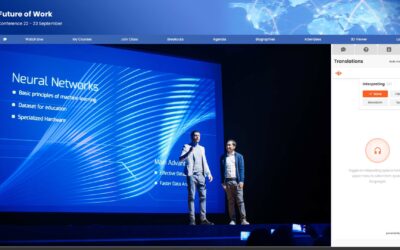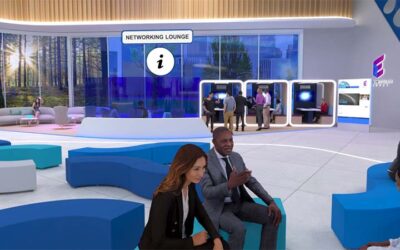Procreation are delighted to announce their new...

How to create your own Virtual Environment
Designing your own Virtual Environment
A Virtual Environment is a fun way to engage with audiences, whether for a product launch or large-scale event. From e-learning and online education to product demonstrations, this technology enables you to immerse your audience in any location in the world with realistic sights and sounds. The great thing? You can also create Virtual Environments that are totally made up; the only limitation is your imagination! Virtual Environments have the ability to engage audiences like never before, and in a way that can’t be replicated in real life.
What is a virtual environment?
A Virtual Environment is a computer-generated world that can be explored, interacted with, and experienced by an individual. Virtual Environments can be used for a variety of purposes, including business, entertainment, training and education.
Virtual Environments have several advantages over the real world in terms of hardware capabilities.
For example: it is possible to create virtual environments that are much larger than any inhabited place on Earth. Love a specific venue in real life, but can’t go there because the building doesn’t have enough breakout rooms or a big enough plenary? No problem!
It is also possible for individuals to experience events in these environments at any point in time (for example: walking through New York while it’s snowing). Additionally, because they exist only within computers or other devices that connect to them via the internet, they don’t require physical space like traditional cities do. Virtual Environments are becoming increasingly popular thanks partly due their ability to allow users to interact with each other even though physically separated from one another.

The logistics of creating a Virtual Environment
You now have a basic understanding of how Virtual Environments work, so you’re ready to create your own. We’ll provide you with some tips on how to plan your very own Virtual Environment, as well as the benefits and limitations of creating a custom-tailored experience.
The most important aspect of creating a Virtual Environment is deciding on its content. You’ve got plenty of options; you can make it look like a walk through of an art museum, a conference center, or an interactive educational sports stadium; you could even build one that’s designed based on a specific setting such as space, under the sea or in the middle of a major city. It all depends on what kind of message or experience you want to convey and what your objectives are.
Once you’ve decided on the type of Virtual Environment (or multiple types), it’s time to think about what exactly should go into the environment. When planning your content for your virtual environment, Virtual Experience Center or Virtual Event, we recommend thinking about what people need from it first.
- What will they be doing? If they’re trying something new or learning something new, then make sure you’re providing clear instructions and guidance along the way with any necessary resources (such as introductory videos, instructional hot spots and welcome messages).
A bespoke Virtual Environment is a fun way to engage with audiences, whether for a product launch or large-scale event
A Virtual Environment is a fun way to engage with audiences, whether for a product launch, e-learning programme or large-scale event. Live streaming, breakout sessions and interactive educational content are all great ways to get your message across in a memorable way.
Onboarding employees is another good use of the technology when new employees can be quickly brought up to speed, remotely, in an environment that replicates their current or future workplace.

Product demonstrations in a Virtual Environment
Using a Virtual Environment for product demonstrations is a great way to show off your products. Whether you are selling a product or service, a Virtual Environment is a great way to showcase your product or service. You can create a Virtual Environment for your product or service and set it up in the same way that you would if it was real life.
It’s also important to remember that when designing your own Virtual Environment, it needs to be user-friendly and easy to navigate through. With this in mind you’ll make sure your users have an enjoyable and engaging experience when visiting the platform.
Virtual Experience Centers
Virtual Experience Centers (VECs) allow you to engage audiences wherever they are and provide on demand content all year round. They are customised around your brand, offering a truly unique experience for your target audience. Again, a Virtual Experience Center can be created in a realistic setting, such as a showroom or laboratory, or one that is more conceptual. The choice is yours!
To conclude
When it comes to designing your own Virtual Environment, there are a few key things that you want to keep in mind.
- First of all, what is the goal of this experience? What do you want people to take away when they visit your space?
- Secondly, how do we create an emotional connection between the user and the brand?
- Finally, how can we make sure that users have a productive and informative experience while they’re exploring our products or services?
Need some help with a custom Virtual Environment for your next event, product launch or learning programme? You’re in the right place! Contact one of our experts today for a no obligation chat or a demo of Procreation’s market leading Virtual Event solutions.
Book a time with one of our team to discuss your next project
More insights from the Procreation blog
Procreation and Interprefy partnership
Unmissable features for Virtual Events: Network Café
Virtual Event Feature spotlight - Networking...
Gen Z in the workplace: what you need to know
Gen Z – the next generation of workers Gen Z is...








